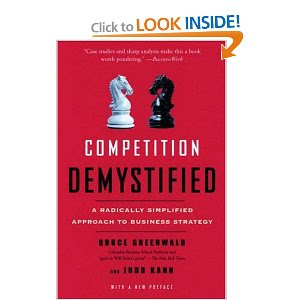The author of the excellent book for beginners, Value Investing: From Graham to Buffett…, is back, this time with a book about how to understand and analyze competitive advantages. Investors interested in better understanding what gives a company a competitive advantage must give this book a read.
For decades, Kodak had a competitive advantage in a segment of the camera and camera film industry. But when Kodak ventured outside of this segment and tried to compete with Polaroid in the “instant” category, it was unsuccessful. Based on the framework laid out in the book thus far, the authors demonstrate that Kodak made a number of foreseeable errors.
Polaroid had a monopoly in the “instant” market, protected by proprietary technologies (patents) and economies of scale. Polaroid operated in this business and this business only. Though the company was wildly profitable, thanks to this industry position, the company’s founder was clearly not about maximizing the bottom-line. The company poured much more into R&D than it had to, and it did not apply the more lucrative razor/razor-blade approach (camera/camera-film), resulting in slow camera adoption rates.
From the above, Kodak should have recognized that Polaroid would not cooperate with Kodak entering its market. With Polaroid’s economies of scale and patents, Kodak would be unable to match Polaroid’s R&D and fixed asset spend, making it hard to come up with a product that would be a hit with consumers and still be profitable. If Kodak tried to take share on price, all indications suggested Polaroid would defend itself vigourously.
It did not end well for either company, as profits were driven lower as a result of Kodak’s entry. Though the cheaper prices and better products benefited consumers and thus grew the market, this market growth came at the expense of Kodak’s profitable segment of the market, resulting in a double-whammy for Kodak.




